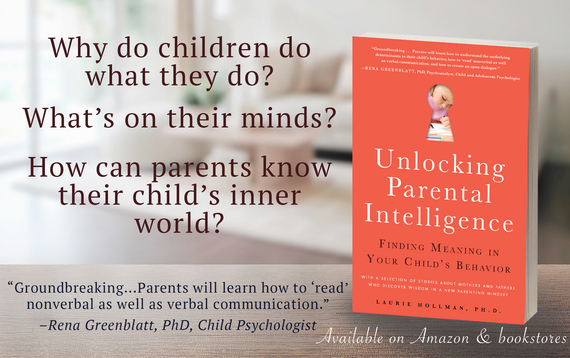Children's drawings are remarkable communications about what is on their minds. The simple question to a child, "What is your picture about?" brings forth a wealth of information about the child's thoughts, intentions, desires, feelings, imaginings and perhaps, fears.
How the Drawing is Laid Out
The way the drawing is positioned on the paper, the color choice, the size of the figures, and the content are all important in understanding what is going on in the child's mind. It is essential to listen to the child's expression about the drawing or painting because they are the experts on their pictures. Too commonly, adults short-circuit a child's explanation of the content behind the drawing by giving it a name or telling the child what it means. Listening to the child is key.
Different Types of Drawings
Let's think about different drawings children commonly make
A Tree and a House
A tree often symbolizes the child him or herself. Is it tall and stately? Weak and small in a corner? Colorful and expansive? Is the house a rendering of the child's version of their own home or a wished-for residence? Is it large and detailed or small and plain? All these questions tell about the child's self-concept represented by the house and tree.
Vampires, Witches and Ghosts
This is a vast area to draw tentative conclusions about. Vampires and witches are very common in movies today, so a child may have seen a show that they are drawing their version. It's relevant to point out this is their version. Yes, they've seen the vampires depicted on a screen, but it's what they make of it that's important.
Does their drawing tell a story about what the vampire or witch is doing? Do they include their family members as the vampires? For example, is there a mommy and daddy vampire? What are they doing? Maybe a baby or child vampire is doing something as well. Do you see relationships between the figures that the child can tell you about?
Before you know it, the child is actually talking about their family under the guise of the vampire story. This is similar for witches and ghosts. It's important to keep the discussion in the vein of the figures you see. Don't say, oh, these are your parents. This will shut the child down.
In every case, hold back your own ideas as an adult. Simply ask the child to elaborate more on what they drew or painted. Ask them what the color blue or black or red suggests to them. You learn much more by asking the child their point of view than sharing your own. Sharing your own point of view may close down the child's thoughts because they then shift to wanting to please you.
Rainbow and Sunny Pictures
Grade-school girls and boys often draw rainbow pictures with a sun that's a circle with spokes. This is a happy picture if it fills the page. It suggests the child is well-adjusted. On the other hand, it could be the kind of picture the child believes the parent or teacher wants. It is a pleasing-the-adult picture that may cover lots of other feelings the child is guarded about sharing.
Animals
If kids have pets, they often draw them as part of a family drawing. They will be very glad to tell you the pet's name, how it got the name, and their feelings about the pet which are usually positive. If you hear fears about the pet or other animal or scary feelings in general, this is a red flag because it is very uncommon. Simply ask the child to tell you more details about the animal and you will learn a lot.
Parents in Precarious Situations
Usually parents are drawn depicting their generational hierarchy in the family. Notice if one or another parent is larger or smaller than the other, if they have distinct gender differences, and if they are just lined up like a photograph or actively engaged in an activity, particularly with the child.
If you see the parent in a precarious position such as drowning in the ocean or on fire, this is definitely worrisome. Clearly the child is feeling a lack of safety and security that should be pursued. But again, don't offer your own thoughts that will close the discussion down.
Ask the child to tell you a story about the picture. The story may change day to day, but each time you discuss it, you will learn more. If you are a parent and become worried, consult a professional.
Colors
Pastel colors are often used if they are available especially with magic markers, crayons, and colored pencils. This suggests a happy child with ideas of pleasure. If red or black are used dominantly, they generally express strong feelings of anger or fear and should be discussed. For example, a picture of a child with a big black mouth with gritted teeth would suggest tension and perhaps anger. A very red sky or all blackened figures may suggest worry of some kind. In any case, the same rules apply. Ask the child for more detail. Simply say, "Tell me a story about your picture."
I'm sure you've noticed that I haven't drawn direct conclusions from any of the picture elements because each child is different with different actual experiences and inner feelings and imaginings. Each picture for each child should be taken on its own merit. It used to be more common to attach meaning to certain universal symbols, but today we know that kids are individuals with their own life experiences, traumas, and every day happenings that are reflected in their pictures.

Laurie Hollman, Ph.D. is a psychoanalyst and author of Unlocking Parental Intelligence: Finding Meaning in Your Child's Behavior found on Amazon and Barnes and Noble and wherever books are sold.